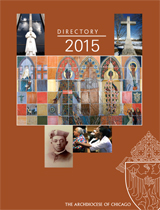November 23, 2008
Reading Bible in new light
At the height of his ministry, St. Paul had great resources to draw upon, especially his own rich education in the Scriptures of Israel and in the rabbinical tradition of interpretation. He may have even kept carefully preserved notes about the Lord’s suffering, or maybe a list of Jesus’ own sayings.
How did Paul put together the history and sacred writings of Israel with the teachings, death and resurrection of Jesus? Was the Torah to be written from scratch, now that Jesus had come and made all things new?
Actually, the coming of Jesus and the mysteries of his earthly life and his resurrection shed new light on the Scriptures of Israel and made them even more vitally important. In his letters, Paul kept going back to the same pivotal stories of Israel. He realized that they weren’t only examples to follow, they contained a whole level of truth that is not merely factual or cause-and-effect.
Paul declared, “All Scripture is inspired by God and useful for teaching, exhorting and training in righteousness” (2 Tm 3:16). That’s why St. Paul gives so much emphasis to reinterpreting the stories he knew his whole life long. For Paul, the coming of Jesus as Messiah and all that happened to him (especially his death and resurrection) invited a new reading of the familiar stories.
For example, when Paul read the story of Exodus, he recognized baptism and Eucharist in the stories of the Red Sea and the manna from heaven in the Old Testament. The water of the sea was real water, and the manna was real food. But the water of baptism and the bread of the Eucharist are real. By seeing what the water and the manna meant for the people of Israel in the Exodus, Paul gained insight into these two.
Old and new
This approach to Scripture is called typology. In this spiritual reading of Scripture, the “original” thing or event is called a “type” and the new, corresponding fuller expression of it is called the “anti-type.” Paul was probably the first to write about the Old Testament in this way.
Once he started, Paul found Christ everywhere in the history of Israel. Circumcision was a huge issue in the early church. Paul pondered this sign of the covenant with Abraham in light of Christ and concluded that circumcision is a “type” that tells us about baptism. In baptism, we strip off our fleshly, earth-centered existence entirely: All of us, male and female, are marked with the covenant in the blood of Jesus.
As great as the covenant with Abraham is, the covenant in Jesus is greater. What about Moses’ shining face when he met God in the tent (Ex. 34:29-35)? Paul said that we are to shine with the light of Christ, and not ever cover that radiance with a veil the way Moses did, because it will never fade. Paul represented the stories of Israel all the way back to Adam and Eve: Christ was the “last Adam,” who surpasses the first as the first member of a new humanity.
The many Old Testament references in Paul’s letters — teachings, prophecies, images and examples — show that even the pagan converts were instructed in the Scriptures of Israel as part of their Christian initiation. So Christians, starting with Paul and the apostolic generation, read the Old Testament prayerfully as addressed to them. The stories didn’t change, but God’s action in Jesus revealed a whole new dimension of truth and grace.
Just as Paul and his communities started to read the same old stories in a brand new way, we can go back again and again to the same pages of the Bible. God’s Word doesn’t change. We do, and that creates new “places” in our mind and heart that the Word of God can now reach and take root.
Flanagan, a Daughter of St. Paul, writes from above her community’s bookstore on Michigan Avenue.
 Catholic
New World - Newspaper for the Archdiocese of Chicago
Catholic
New World - Newspaper for the Archdiocese of Chicago Archdiocese of Chicago Directory
Archdiocese of Chicago Directory Oficjalne wydawnictwo Archidiecezji Chicago w języku polskim
Oficjalne wydawnictwo Archidiecezji Chicago w języku polskim